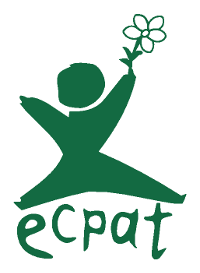On February, the 9th 2018, newspapers started disclosing allegations affecting Oxfam UK: after the earthquakein Haiti (2010), aid workers allegedly paid to have sex with young local women, perhaps minors. What Oxfam is being blamed for is not so much its employees’ behaviour – no NGO being immune to a breach of its Code of conduct – but the way these facts were handled.
“Second-hand child for sell, rather good condition”
“Dominic would like a family who would support him. He would love to cook for his new family, and he would like to be the youngest or only child. And here is Sabey. Sabey would like to be adopted by a traditional family, with two parents and other kids”. These product-like descriptions are spelled out by a middle-aged woman, standing at the back of a long catwalk. She holds a microphone in her hands and smiles at the audience. Her aim today is to manage to sell at least one child.
Since their very beginning, new technologies have been used to perpetrate crimes related to child sexual abuse. Indeed, they provide for an ideal environment for the production, acquisition, possession and distribution of child sexual abuse materials, while guaranteeing anonymity to their users. Moreover, they allow individuals having a sexual attraction for children to meet, share their experience and find justifications to their deviant behaviour.
This analysis is the first part of a diptych dedicated to child sexual abuse materials on the Internet. It aims at throwing a closer look on the motives, influences and interactions between users of child sexual abuse materials and the justifications they use to minimize their behaviour.
Even if the extent of child sexual abuse materials on the Internet is difficult to evaluate, experts agree on the fact that it is huge and will increase in the years to come. Consequently, this second analysis on child sexual abuse materials and the Internet is focused on challenges faced by law enforcement agencies to quantify this phenomenon and find new materials but also on measures set up at the national, European and international level.
Darknets are private networks guaranteeing anonymity to their users for different activities, among them file sharing. The common philosophy adopted in this underground of the Internet being a complete rejection of any censorship, these networks are also used for the exchange and dissemination of child sexual abuse materials. Because of their hidden nature, they represent a constant challenge for law enforcement forces. Exploration of the dark face of the Internet…
The transition of Central and Southern Eastern Europe countries towards a market economy, combined with the freedom of movement of people/goods has pushed young people on the roads towards Western Europe. However, these young migrants are at-risk of being trafficked. Upon arrival in another EU country, they have no guarantee of being protected by the national protection systems, more focused on (third-country) nationals and often excluding migrants from the EU. This analysis presents the Mario II project aiming at raising awareness of policy-makers on the difficulties faced by these young migrants and formulating recommendations for improvements.
“Every day, adults take decisions for young people without consulting them” said a 17-year old member of « Youth Force». While the role played by different stakeholders in the fight against commercial sexual exploitation of children has been studied, very few research has been done on child participation within this fight. However, children and youth are directly affected by this problem and are the first concerned and impacted by the protection measures. This analysis explores the role of child participation in the fight against commercial sexual exploitation of children and how this participation can be implemented.
Webcam child sex tourism is a new form of sexual exploitation of children and has been increasing recently, facilitated by the new technologies (Internet, TOR network), globalisation and the economic crisis. The physical, psychological and social consequences are as catastrophic as the other forms of sexual commercial exploitation of children. An appropriate legislation, as well as an effective coordination are essential to raise awareness of the general public and inform all sectors that are likely to be in contact with predators and child victims.
This year marks the 25th years of the Convention on the Rights of the Child. But yet, has it made effective progress on the fight against sexual commercial exploitation of children in Belgium ? Many factors – such as new technologies, globalisation, increasing tourism and the economic crisis – challenge this fight. How does Belgium tackle the issue ? This analysis sheds light on the Belgian legal situation, but also on the measures that have been implemented. It questions the challenges that our country faces and the potential solutions that could help fighting, in a more effective way, those violations of the rights of the child.
The use of the Internet has considerably increased during the last couple of years. While new technologies offer incredible opportunities, they also expose children to online threats such as grooming. What does this really mean? This analysis tries to describe the phenomenon and the new legal provisions recently adopted in Belgium to protect children from online grooming.
